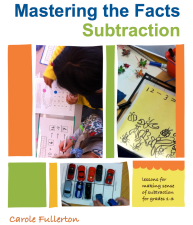Roll the Bigger Product Game
Hello friends. I hope you’re well.
As we move into another week of “school at a distance”, I’d like to offer you a game for intermediate students. This is a game that requires a partner and a regular 6-sided die (although a 10-sided one will make things more interesting!).
 Full instructions for play are on the Roll The Bigger Product game board, but the goal is to take turns placing numbers in each of the positions in the 2-digit factors to create the largest possible product. You get to discard 2 rolls — throwing them into the trashcan — to be even more strategic! When all 6 positions are filled, calculate the product and compare it to your partner’s. The larger product wins.
Full instructions for play are on the Roll The Bigger Product game board, but the goal is to take turns placing numbers in each of the positions in the 2-digit factors to create the largest possible product. You get to discard 2 rolls — throwing them into the trashcan — to be even more strategic! When all 6 positions are filled, calculate the product and compare it to your partner’s. The larger product wins.
To add complexity to the game, try placing decimals between both double digit factors — or harder still, within just one of the 2 factors.
Carole
For more games like this and a set of fully fleshed out lessons, see my teaching resource “Multiplicative Thinking: From Skip Counting to Algebra for Grades 3 to 8” available from my online store.
Sidewalk Chalk Meets Math Game Part 2: Testing the Limits
All right folks…
If you’re outside (or wish you were!) here’s another math game worth playing. It’s called Testing the Limits — and I’ve adapted it from BEAM Maths of the Month.
 This version is adaptable for all grade levels and can be played outside with sidewalk chalk (or indoors on paper!).
This version is adaptable for all grade levels and can be played outside with sidewalk chalk (or indoors on paper!).
To play, you need sidewalk chalk and a die (6-sided is fine, 10-sided is better!). You can play this game with a partner or alone. Here’s how…
ROUND 1: Roll the die 3 times and make a 3-digit number. Roll 3 more times and make a second 3 digit number. Put both numbers on the same number line. These are your “limits”.
ROUND 2: Now roll 6 more times. Make 2 different 3-digit numbers that fit within the limits from ROUND 1. Plot them on the same number line as ROUND 1. If you can do it, these new numbers become your new limits and you can move onto ROUND 3. If not… the game is over! Check out my sample game below.
Try using just two 2-digit numbers for younger students, or even decimal numbers for older students. Consider trying this with negative numbers, or even one negative and one positive to explore both sides of zero.
Enjoy! Stay safe…
Carole
Check out my online store for more free materials and problem-of the day resources!
Sidewalk Chalk Meets Math Game!
For those of you who are looking for ways to play together and build mathematical thinking and skills at the same time, consider this simple hopscotch game. You’ll need sidewalk chalk and a small stone. Children can play alone or in partners.
Go outside. Draw a large square on the pavement. Divide the square into at least 9 smaller squares, as shown below. This is called a matrix.
In each of the smaller squares record a number from 1 to 9. You can put them in any order. Now take a small stone and toss it onto the matrix. This is your starting square. From here, you must jump to the number that adds to give you 10.
In the game below, a child has thrown a stone onto the number 8. She stands on the number 8 then and has to jump to get to the number 2 — the missing part to get to 10.
 If there’s another child nearby, they should record the equation that matches the jump. (8 + 2 = 10)
If there’s another child nearby, they should record the equation that matches the jump. (8 + 2 = 10)
Player 2 (if there is one) takes his turn, throwing a stone and jumping from that number to the missing part to make ten. Player A records the equation.
The first player to hop on all the combinations is the winner. (And yes, landing on a 5 gets you a double jump!)
If you’re stuck inside, make the matrix on a sheet of paper and toss coins — or even Cheerios! — instead of jumping from number to number. Toss the first coin, say the number you’ve landed on, then say what the missing part is to get to the desired sum.
Of course you can change the numbers to suit the age and stage of the players…
the numbers to suit the age and stage of the players…
Consider a double-digit version (Get to 100!) or even a decimal version (Get to 5.0!). The sky’s the limit. I’ve included line masters for each of these games — and a blank grid, too — for you to use as inspiration.
Have fun… stay safe…
Carole










